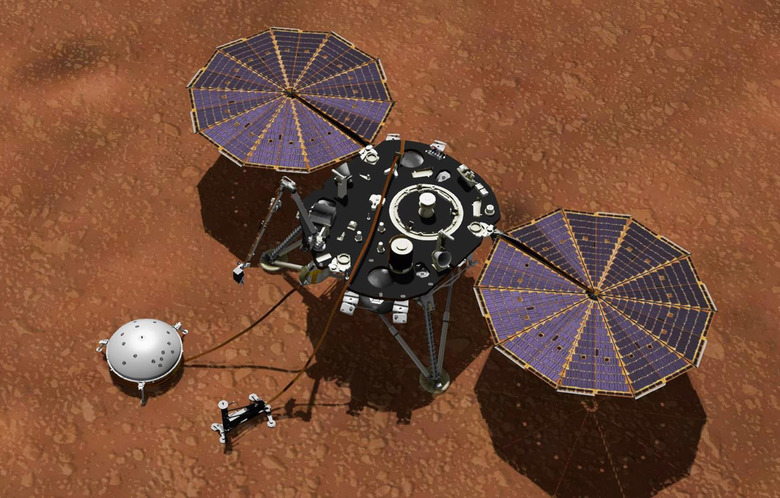Another Glitch Plagues NASA's InSight Lander
- NASA's Mars InSight lander had been providing weather updates from the surface of the Red Planet, but that has abruptly stopped.
- An unspecified glitch has caused the lander's weather sensor system to go into safe mode, and NASA is still trying to figure out why.
- The system may spring back to life with a reboot, but NASA is taking things slowly.
NASA's InSight lander has done a lot of work since it arrived on the Red Planet, but it's perhaps best known for what it hasn't been able to do. The self-hammering "mole" tool the lander is equipped with just hasn't been doing its job. That's a big deal, but the mission is far from a total loss thanks to the abundance of other sensors and instruments the lander has onboard.
Some of those sensors are designed to track the Martian weather, and NASA has even gone so far as to declare InSight the first Martian weather station. You can check on the latest weather on the official InSight website... or at least you could. That was before it stopped working.
Unfortunately, something appears to be wrong with the weather sensors, and as NASA's Jet Propulsion Laboratory explains in a new blog post, the scientists aren't quite sure what went wrong.
"Called the Auxiliary Payload Sensor Suite (APSS), the sensors collect data on wind speed and direction, air temperature and pressure, and magnetic fields," NASA explains. "Throughout each Martian day, or sol, InSight's main computer retrieves data stored in APSS' control computer for later transmission to orbiting spacecraft, which relay the data to Earth."
That's all great, but it's only useful if it's working as intended. Right now, as NASA explains, the system is in "safe mode" due to some kind of an issue. "APSS is in safe mode and unlikely to be reset before the end of the month while mission team members work toward a diagnosis. JPL engineers are optimistic that resetting the control computer may address the issue but need to investigate the situation further before returning the sensors to normal."
The InSight lander has many duties. Thus far, it's returned data on "Marsquakes" rolling through the planet and provided a wealth of data regarding the weather. The faulty Martian mole tool, which NASA scientists are still trying to figure out, would provide a whole bunch of new data if its handlers can ever get it working. If it's capable of digging to a depth of over a dozen feet, as it's designed, it will take temperature readings and provide an even more vivid picture of the planet's surface and what lies beneath.
All of this research goes a long way toward preparing for an eventual crewed mission to the Red Planet. If we're to succeed in setting up even temporary settlements on the planet, knowing exactly what it has to offer in terms of weather, temperature, and Marsquakes will be crucial.
